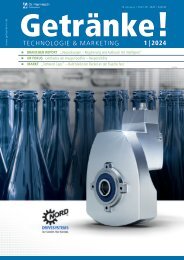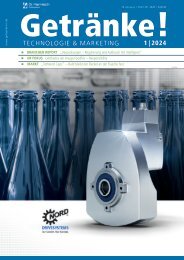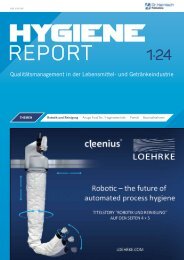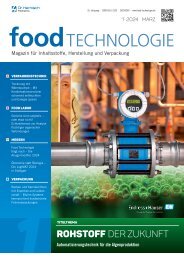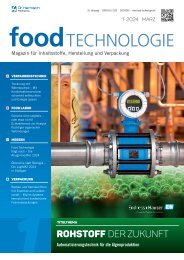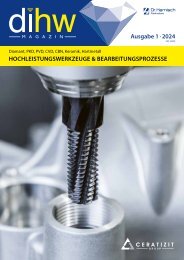WIN woodworking INTERNATIONAL 2022/3
WiN – woodworking INTERNATIONAL is the international magazine for the woodworking industry. We report on all aspects of woodworking from board materials, wood treatment to machines, tools and technical know-how, from timber engineering supplies to the latest developments in technologies and markets. We address factory managers and production engineers directly, and thus ensure coverage of the decision makers within the industry. Circulation is worldwide with special emphasis on the most important growing markets. An increasing share are subscriptions and requested copies. Our online-section will further be expanded according to reader requests. WIN – woodworking INTERNATIONAL is published in English.
WiN – woodworking INTERNATIONAL is the international magazine for the woodworking industry.
We report on all aspects of woodworking from board materials, wood treatment to machines, tools and technical know-how, from timber engineering supplies to the latest developments in technologies and markets. We address factory managers and production engineers directly, and thus ensure coverage of the decision makers within the industry.
Circulation is worldwide with special emphasis on the most important growing markets. An increasing share are subscriptions and requested copies. Our online-section will further be expanded according to reader requests.
WIN – woodworking INTERNATIONAL is published in English.
Create successful ePaper yourself
Turn your PDF publications into a flip-book with our unique Google optimized e-Paper software.
MACHINING TECHNOLOGY<br />
60 years of HOMAG edge banding machines<br />
Part 2<br />
The HOMAG Group is celebrating a birthday: 60 years ago, the company from Schopfloch in Germany launched the first throughfeed<br />
edge banding machine using the hot-cold application process onto the market. The machine was an immediate hit. What followed<br />
over the years was a constant series of innovations and further developments that have allowed HOMAG to regularly prove itself as a<br />
pioneer and technology leader in edge banding right up to the present day.<br />
Precision and performance in batch size 1: the EDGETEQ S- 800 series with WZ24 workpiece infeed system<br />
Furniture as a driver of innovation<br />
However, all of these edge banding technologies<br />
were driven not only intrinsically – new<br />
features in furniture design also regularly initiated<br />
innovations. These included shaped parts,<br />
with HOMAG developing soft-forming and postforming<br />
machines for the production of such<br />
parts in throughfeed operation – specifically,<br />
the KL 70/KL 80 and VF 78/79 and VF 88/89. In<br />
turn, such developments spurred on furniture<br />
design. In addition to soft-forming and postforming<br />
concepts, HOMAG has increasingly presented<br />
interlinking, automation and handling<br />
solutions, such as angular transfers or rotary<br />
stations, to a furniture industry that was undergoing<br />
change. “In the middle of the 1980s,<br />
HOMAG also built the first door systems for attaching<br />
edges to rebated doors,” recalls Ernst<br />
Esslinger, Director Systems Project Execution.<br />
“In 1987, shaped part throughfeed machines<br />
followed, meeting the demands of the furniture<br />
industry to produce curved or shaped parts from<br />
rectangular workpieces in one throughfeed. Up<br />
until that point, this was possible only with<br />
great effort and two to three process steps.” The<br />
fact that HOMAG always had a decisive influence<br />
on the expansion of the postforming process<br />
paid off once again in 1990: The further<br />
development into the postforming direct process<br />
now enabled the user to organize processes<br />
easily, without having to profile, brush, glue,<br />
overlay and press separately.<br />
Throughfeed and stationary coating<br />
The HOMAG Group has also repeatedly introduced<br />
new technologies outside the scope of<br />
pure edge processing. In 1982, this included the<br />
completeLine process, which is used to coat unprocessed<br />
chipboard on three and four sides in<br />
one throughfeed. For this purpose, the “narrow<br />
surface is compressed with a mass, which gives<br />
the edges a higher quality and makes them<br />
more resilient, even with large-pored panel material”<br />
explains Ernst Esslinger. “In this context,<br />
the FKF 200 flat laminating machine with reacTec<br />
nozzle application was introduced in 2015<br />
in the completeLine process. The machine can<br />
be used to laminate the wide and narrow surface<br />
with rolled material in one process step.<br />
The narrow surface is then finished by a casing<br />
line and a post-processing unit.”<br />
In 1989, with the increasing change in furniture<br />
design and the increasing demand for<br />
shaped parts, HOMAG decided to use CNC stationary<br />
technology for processing these types of<br />
parts. As a result, significant further developments<br />
were presented and the possibilities for<br />
use and processing were continuously expanded.<br />
One milestone in particular was the integration<br />
of edge banding and processing units,<br />
for which the machine control unit had to meet<br />
high demands for dynamic response and positioning<br />
accuracy. “Today, stationary machines<br />
can be used to perform almost any complete<br />
processing,” explains Frederik Meyer, Executive<br />
Vice President, CNC Processing. “As the equivalent<br />
of the throughfeed technology, they represent<br />
an important, future-oriented pillar of the<br />
group. Combined with feed and stacking equipment,<br />
complete production cells that also enable<br />
unmanned processing are produced.”<br />
Digitalization and its tools<br />
Today, developments in the wood processing<br />
and furniture industry are heavily influenced<br />
by mega trends such as automation and digitalization.<br />
This is particularly reflected in control<br />
system technology and computer technology,<br />
which are key technologies that determine<br />
the expansion of the entire production as well<br />
as individual processing methods. “Like almost<br />
no other company, HOMAG recognized this at<br />
an early stage and continuously presented solutions.<br />
A uniform control system for all the<br />
group’s processes was therefore a strategic goal<br />
from a very early point,” emphasizes Matthias<br />
20 No. 3 • August <strong>2022</strong>













